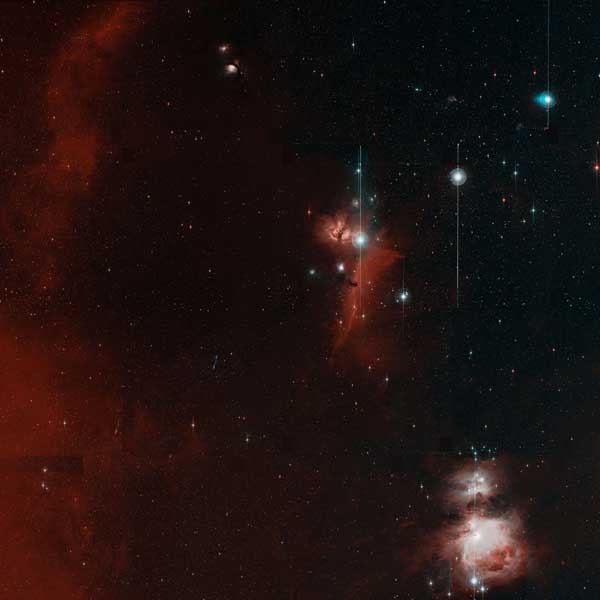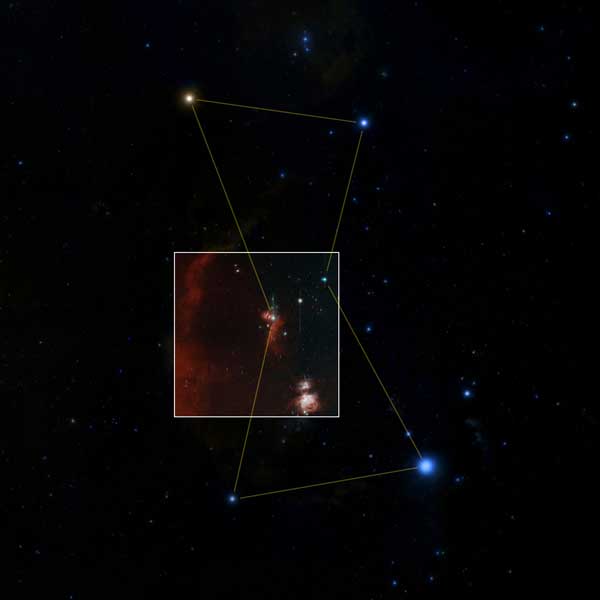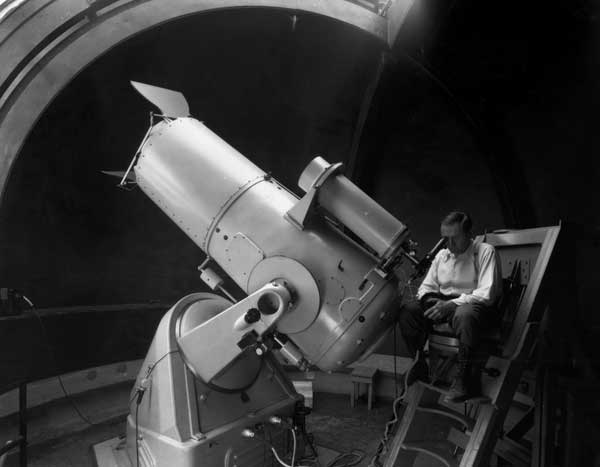The Zwicky Transient Facility has taken its first image, covering an area equivalent to 247 full Moons in a single shot. This beginning is part of an ongoing sea change in astronomy.
Pictures have long served as a foundation of astronomy. But very soon astronomers will be turning to videos. Humans have always known that the seemingly eternal sky changes from night to night — Aborigines even incorporated such changes into their mythology — but for the most part studying celestial transience has required a great deal of patience or a willingness to trawl the archives. Only in the 21st century, in the era of Big Data, has astronomy had the capability to truly step into the time domain.
The Zwicky Transient Facility (ZTF) is a part of that sea change: It just took the first image of many, a 47-square-degree field of view equivalent to the area of 247 full Moons, captured in 24,000 by 24,000 pixels. The scene holds a chunk of Orion, showing the Orion, Flame, and Horsehead nebulae. This image precedes the facility’s science phase, which is set to begin in February 2018 and complete by 2020.

Caltech Optical Observatories

Caltech Optical Observatories
The ZTF is the sequel to the Palomar Transient Factory (PTF), which employed three telescopes — the automated 48-inch Samuel Oschin Telescope, the automated 60-inch telescope and the 200-inch Hale Telescope — to triage the night sky. The Oschin Telescope acted as the discovery engine, then the 60-inch telescope followed up to help identify the sources. The Hale Telescope as well as others provided further detail for those objects meriting in-depth investigation.
Named after astronomer Fritz Zwicky, the ZTF is also installed on the Oschin Telescope, but with two big changes. The camera it uses surveys seven times the area of the PTF camera, enabling it to capture more sky at once. The electronics have improved, too. While it took 40 seconds to read an image from the PTF camera, it takes only 10 seconds to read the bigger image taken by ZTF, while, the fast-slewing telescope readies for the next image.
Principal Electronics Engineer for Palomar Observatory, Roger Smith, describes how Palomar’s 48-inch Schmidt Telescope was originally built and then adapted for use in the Zwicky Transient Facility in this video from Caltech:
As a result of these modifications, ZTF is about 12 times faster than PTF — in fact, scanning at its full speed of 3,750 square degrees per hour, it could cover the entire sky in a single good night.
But, explains project lead Shrinivas Kulkarni (Caltech), that’s not what astronomers want. The issue is cadence: catching a supernova just after it has exploded, for example, would require repeated observations every couple hours; if the telescope scans only once a day, astronomers would miss those crucial first moments of eruption. “Cadence is something that gets people very emotionally spun up,” Kulkarni says.

Edison R. Hoge Photograph Collection / Caltech Archives
So the ZTF team compromised: the facility will scan the full sky every three nights. It’ll spend the other two-thirds of its time on two other projects: one project will look away from the plane of the Milky Way, hoping to catch distant supernovae, gas-guzzling black holes, and other ephemeral events occurring outside our galaxy. The other project will look directly at the galactic plane, dense with stars.
“It’s technically hard to look at so many stars and extract signals,” Kulkarni adds, “but if we’re watching, say, a tens of millions of stars a night, something will be happening.”
Any given image the ZTF takes could hold more than 100,000 stars and galaxies, and the observatory will be collecting 4 terabytes of data every night. Amidst all those sources of light, what will astronomers — or the computers they train — be looking for?
The answers are legion:
- PTF has already caught a star just 11 hours after it exploded in a Type Ia supernova, and ZTF has the chance of catching such an event even sooner.
- Dennis Bodewits (University of Maryland) estimates that ZTF will sweep up 30 to 50 comets every time it scans the whole night sky, giving amateur astronomers a good run for their money. Near-Earth asteroids are another target.
- Suvi Gezari (also at University of Maryland) hopes to catch a black hole as it catches and tears apart a star, an act known as a tidal disruption event. Astronomers could watch as the star’s gas forms an accretion disk around the black hole, which could even power a jet.
- ZTF will also serve as a crucial follow-up instrument, pinpointing the origins of sources discovered by LIGO and Virgo, the IceCube neutrino observatory, and Fermi’s gamma-ray telescope.
- ZTF will chart variable stars such as Cepheids and RR Lyrae that are crucial to mapping out the structure of our galaxy.
Looking ahead, ZTF is a stepping-stone to an even bigger project: the Large Synoptic Survey Telescope. Scanning at 10 times the rate of the ZTF, LSST is set to make a 10-year movie of the night sky starting in 2023.
Read more about how machine learning is tackling astronomy’s Big Data in the December 2017 issue of Sky & Telescope.
 1
1









Comments
Rick
November 17, 2017 at 5:14 pm
Yet another thorough, clear, and very readable article by Ms. Young.
You must be logged in to post a comment.
You must be logged in to post a comment.